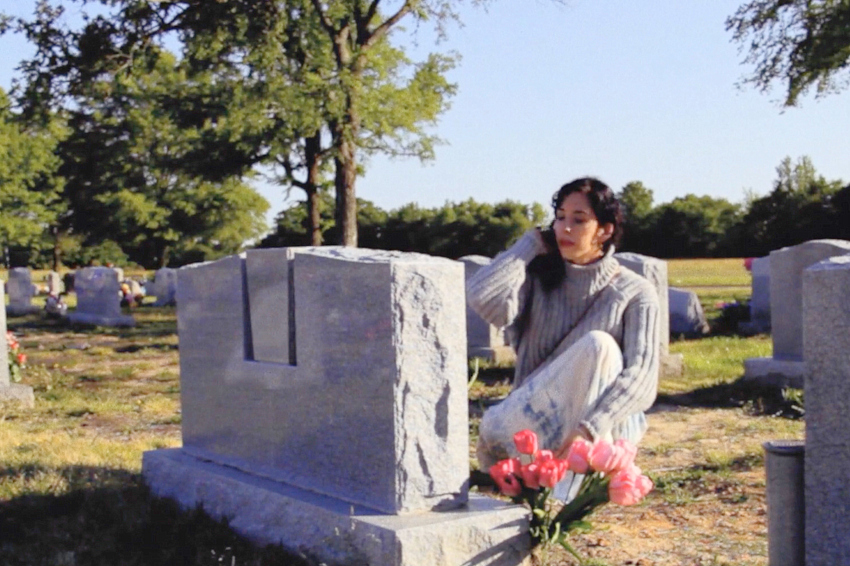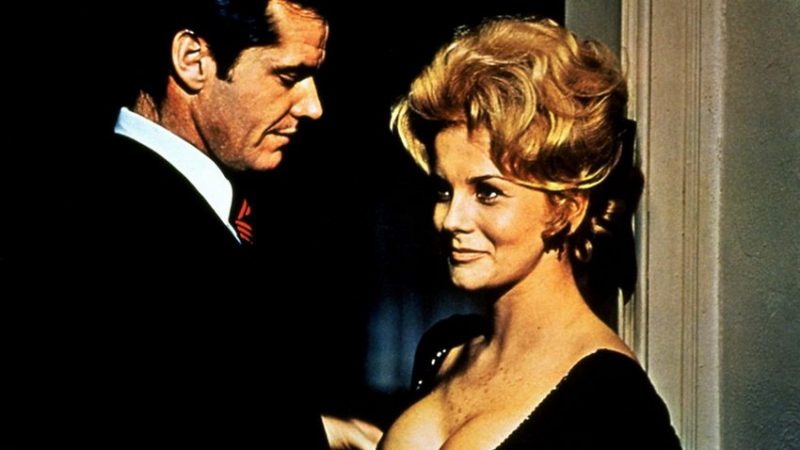
REVIEW: By Brian Neve
Logline
Sirena’s Gallery follows a Salvadoran-American woman’s struggle as an art gallery owner during the COVID-19 pandemic. Recently widowed, Sirena adapts to self-isolation, grief-induced visions, and the world of e-commerce.
Introduction
Christine Sloan Stoddard’s new film, Sirena’s Gallery, her first feature, flirts with melodrama at times, but also tracks the more prosaic life of its main character, a young woman played by Stoddard, in coming to terms with the impact of the 2020 pandemic on the art gallery that she runs and curates. Sirena has been recently bereaved – her husband committed suicide – but her coming to terms with this event, her grieving for him and their imperfect relationship, is gradually transcended by her practical steps to reinvent both her gallery and ultimately herself.
Although the film was conceived back in 2018, the location work for Sirena’s Gallery was completed, at a real gallery in Richmond, VA, in May of 2020. The then strange new world, of masks and social distancing and the isolation that come with them, impinge on the story, but also on the work’s own techniques and textures.
The Official Trailer for Sirena’s Gallery by Christine Stoddard
Review
Sirena visits the cemetery where her husband is interred. He has left her a recorded message that is only later revealed. The protagonist is haunted by him, but also by images of a first visit she made to her ancestral home in El Salvador (phone footage is used effectively here), just before Quinn died. The lockdown, with no visitors and no sales, and bare space on the gallery walls, is a pressing concern. We learn about Sirena by observing her, and hearing her voice-over (spoken by Stoddard) as she addresses the absent Quinn. Previously the images she curated and sold were ones she often disliked; now she reaches for her own sketch book and bag of art materials.
The film is structured around the new lockdown media, as Sirena invents herself anew. A succession of matter-of-fact video chats with potential clients, with the artist a thumb print image in the corner of the screen, structure the story, along with images of the curator’s own watercolors. These are Stoddard’s own pictures, capturing both the elemental – images of locally observed nature – and the new threat to life, and to breathing itself. Red spikey viruses, potential mutants, figure in most of the pictures – lying in wait by the lungs.
By contrast, the video conversations are practical and humorous, as all parties create unaccustomed zoom identities. The semi-improvised chats are interspersed with shots of Sirena walking (another staple of lockdown life), exploring local landscapes and catching spectral glimpses of her absent man.

Another event further troubles our protagonist’s surface serenity, but ultimately this is an optimistic, youthful story, told with some wit and economy. We get to know and like Sirena, and respect her rebirth not only as an effective saleswoman, but as someone willing to rethink her identities, move beyond her traumas. Her art work deepens this sense of self-recreation, along with a final revelation. This is an impressive effort to work within the constraints that we have all experienced, and to make them part of a personal, one-woman story.
Maybe, as mentioned before, the film skirts with the overwrought – from suicide to a miscarriage – but it returns to the everyday effort to rebuild: one step, and one microwave meal, after another. This is not Bergman. But there is a distinctive vision of life and art moving on, growing, whatever the circumstances. Stoddard has the confidence to mix the elemental and the everyday, memory and reality, and the imaginative with the material – the unpaid invoice. The luminous artwork also tells the story, and finds a market. I think that the film will too.
Tell us what you think of “the film” review. What do you think of it? What ideas did you get? Do you have any suggestions? Or did it help you? Let’s have your comments below and/or on Facebook or Instagram! Or join me on Twitter.
Socials
Website
IMDb
Facebook
Twitter
Instagram
FILM REVIEWS
Thelma Adams: Why Tyler Perry Earns the Title of Hollywood’s Last Auteur
Tyler Perry is the critical elephant in the room as Hollywood elites discuss diversity.
Thelma Adams: Mike Nichols Had ‘Carnal Knowledge’
When Carnal Knowledge (Mike Nichols) came out in 1971, I was twelve. The name sent shivers up my spine.
Movie Review: I, Tonya. Victoria Alexander
REVIEW: Film Critic Victoria Alexander
Movie Review: Star Wars: The Last Jedi. Victoria Alexander
REVIEW: Film Critic Victoria Alexander






